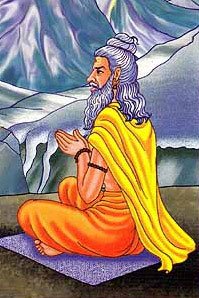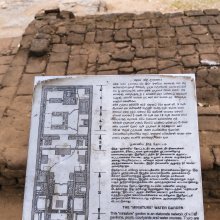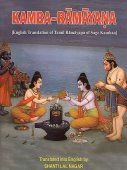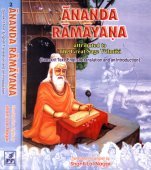Water sport: 1 definition
Introduction:
Water sport means something in Hinduism, Sanskrit. If you want to know the exact meaning, history, etymology or English translation of this term then check out the descriptions on this page. Add your comment or reference to a book if you want to contribute to this summary article.
Images (photo gallery)
In Hinduism
Purana and Itihasa (epic history)
Source: Shodhganga: Elements of Art and Architecture in the Trtiyakhanda of the VisnudharmottarapuranaWater sports (in Sanskrit: Udakāghāta) refers to one of the “sixty four kinds of Art”, according to the Kamasutra of Vatsyayana.—Indian tradition, basically includes sixty four Art forms are acknowledged. The history of Indian Art covers approximately five thousand years which presents a rich and almost continuous record. The references of sixty four kinds of Kala (कला, kalā) are found in the Bhagavatapurana, Shaiva-Tantras, Kamasutra of Vatsyayana etc.

The Purana (पुराण, purāṇas) refers to Sanskrit literature preserving ancient India’s vast cultural history, including historical legends, religious ceremonies, various arts and sciences. The eighteen mahapuranas total over 400,000 shlokas (metrical couplets) and date to at least several centuries BCE.
See also (Relevant definitions)
Partial matches: Water.
Full-text (+15): Jalakeli, Niratavadu, Kridakuli, Kedakuli, Udakotsava, Varikeli, Salilakride, Shambarakeli, Payahkeli, Varivihara, Vahkeli, Khedakuli, Toyakrida, Jalakrida, Udakaghata, Aghata, Shravani, Nirata, Oladu, Arata.
Relevant text
Search found 26 books and stories containing Water sport; (plurals include: Water sports). You can also click to the full overview containing English textual excerpts. Below are direct links for the most relevant articles:
Chaitanya Bhagavata (by Bhumipati Dāsa)
Verse 3.8.116 < [Chapter 8 - Mahāprabhu’s Water Sports in Narendra- sarovara]
Chapter 8 - Mahāprabhu’s Water Sports in Narendra- sarovara < [Book 3 - Antya-khaṇḍa]
Introduction to chapter 8 < [Chapter 7 - Pastimes in Śrī Gadādhara’s Garden]
Chaitanya's Life and Teachings (by Krishna-das Kaviraj)
Chapter XXV - The love of the pilgrims from Bengal
Trishashti Shalaka Purusha Caritra (by Helen M. Johnson)
Part 2: Spring festival < [Chapter III - Eighth incarnation as Vajrāyudha]
Part 18: Other marriages < [Chapter VII - Sanatkumāracakricaritra]
Part 1: Incarnation as Padmaratha < [Chapter IV - Anantanāthacaritra]
Animal Kingdom (Tiryak) in Epics (by Saranya P.S)
Kuntaka’s evaluation of Sanskrit literature (by Nikitha. M)
3.8 (e): Contextual figurativeness or prakaraṇa-vakratā < [Chapter 1 - Vakroktijīvita: A Synoptic Survey]
3. Raghuvaṃśa in Kuntaka’s treatment < [Chapter 2 - Kuntaka’s appraisal of Kālidāsa]
1. Saduktikarṇāmṛta in Kuntaka’s treatment < [Chapter 5 - Kuntaka’s Evaluation of some Stray Verses]
Bhajana-Rahasya (by Srila Bhaktivinoda Thakura Mahasaya)
Related products


